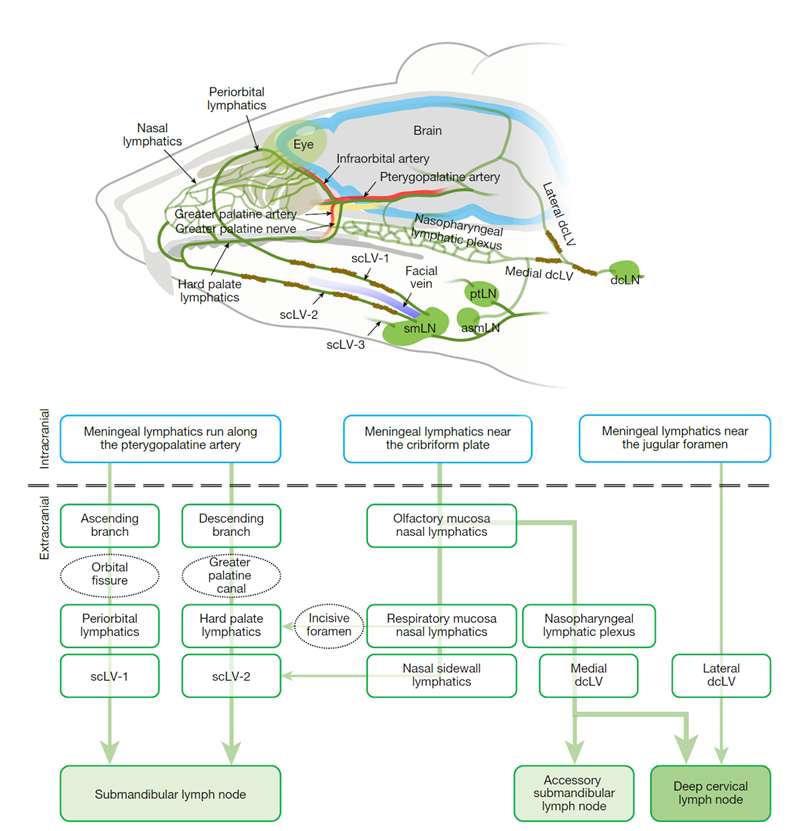- 한국어
- English
- 日本語
- 中文
- العربية
- Español
- Français
- Deutsch
- Pусский
- Tiếng Việt
- Indonesian

This diagram shows the pathway of cerebrospinal fluid drainage through lymphatic vessels. (Nature)
By Lee Dasom
A domestic study has found a method to safely remove waste matter from the brain through non-invasive means.
A research team led by Koh Gou Young, head of the Center for Vascular Research at the Institute for Basic Science in Daejeon, on June 5 said waste products in the brain are drained through a path connected to lymphatic vessels under the skin next to the eyes and nose and submandibular lymph nodes.
The study also found that removal of cerebrospinal fluid can be stimulated through precise physical stimulation.
If metabolic waste produced in the brain is not removed, it can damage nerve cells in posing as a leading cause of neurodegenerative diseases such as cognitive decline and dementia.
As people age, the lymphatic vessels that remove cerebrospinal fluid, weakening the body's ability to remove waste quickly.
In a previous study, the team discovered that drainage of the fluid can be regulated by using drugs in cervical lymphatic vessels, which connect nasopharyngeal lymphatic ducts that serve as channels for drainage of the fluid, and lymph nodes inside the neck area. Practical application is limited, however, as the lymphatic vessels are located deep in the neck.
To overcome this obstacle, the team used advanced visualization technology such as mouse models and in vivo imaging to visualize the pathways to drain the fluid.
The result was that the fluid gathered in lymphatic vessels under the skin of the face (next to the eyes and nose) through lymphatic vessels around the eyes, within the nose and on the palate before draining into submandibular lymph nodes.
The team confirmed that precise and low-intensity mechanical stimulation of the collecting lymphatic vessels under the facial skin of aged mice doubled or tripled drainage of the fluid, showing the potential for improving this function.
"These findings not only complete the map of the drainage pathway of cerebrospinal fluid that clears waste from the brain, but also propose a new method of regulating the drainage of such fluid from outside the brain," Koh said. "We expect this study to serve as a milestone in future research on neurodegenerative diseases including dementia."
The research results were published online on June 4 in the international academic journal Nature.
dletkha0319@korea.kr
